
Mallorca
( 1 user review )Mallorca is the largest of the Balearic Islands, the others being Menorca, Ibiza and Formentera.
Understand
Mallorca (3640 sq.km) is known as an easy-to-reach mecca for friends of sunny beaches, amazing landscapes, wonderful mountains and affordable mediterranean food. With a coastline of more than 550km. In high season the island receives about 8 millions of tourists from around the world. This is both a blessing and a curse for the inhabitants, and they are well prepared for it and provide a very well-organized tourist infrastructure.
Nevertheless, Mallorca can show even other faces when you leave the coastline and take a look at the inner country. Prices fall with each kilometer you move away from the coast, and reach the usual Spanish standards in the center of the island or even some parts of the mountain area.
Geographically the island can be divided into three parts. The Serra de Tramuntana rocks extend from south-west to north-east, while the Serra de Llevant stretches along the eastern coast. Between them lies the central plain (Es pla).
Regions
- Serra de Tramuntana - The mountain range along the north western coast of the island
- Palma de Mallorca - The area surrounding the capital of the island, Palma
- Pla de Mallorca -
- Raiguer -
- Migjorn -
- Llevant -
Cities
-
Palma de Mallorca - Mallorca's main and largest city
-
Alcudia - just perfect for combining beach and cycling
-
Binssalem - located to the north of Palma, this small town features an impressive cathedral and many fine local restaurants.
-
Cala Ratjada - located in the far north-east corner of the island this resort is popular with German Tour operators, who almost exclusively supply the many hotels with guests. The resort is characterised by its large horeshoe shaped beach, although there are two other beaches to choose from. The resort offers a wide variety of shops and the local market takes place on a Saturday, where as well as fruit & vegetables there is a large selection of leather goods, clothes and shoes, as well as locally made table cloths and honey. During the winter months the resort practically closes, with only a handful of hotels and restaurants remaining open.
-
Cala d'Or - resort on the east coast, well known for its annual Jazz Festival.
-
Cala Moraia - resort as well on the east coast, access to golf courses and smaller beaches.
-
Cala Millor - south eastern coastal town, linked by a long promenade to the adjacent resort of Cala Bona.
-
Calvià*
-
Deià - small village in the Tramuntana mountains, beloved by artists, intriguing cementary.
-
Fornalutx - one of the most attractive villages on the west coast, good starting point for hikers.
-
Inca - the second largest city, reknown for its leather factories.
-
Manacor - the third largest city, famous for its furniture shops and pearl factories. There is also a large shop on the outskirts of the town that specialises in products made from the wood of the Olive tree.
-
Pollença - charming little city in the north-east, and home to a good Sunday market.
-
Puerto Pollensa - beach resort in the north of the island, popular with families
-
Sa Pobla - small, rural municipality in the district of Raiguer on Majorca. Hosts fantastic Jazz Festival.
-
Sineu - the geographical heart of the island, a small village best visited on Wednesdays, the weekly market is enormous.
-
Sóller - pretty town set in fantastic mountainous scenery.
-
Valldemossa - the charming village in the Tramuntana mountains is a must see, Chopin spent here a winter with George Sand.
Other destinations
-
Monastery of Lluc - in the Tramuntana mountains
-
Sa Calobra + Torrent de Pareis - Mallorca's "Grand Canyon"
Traveling around
Many spots are reachable by bus, but the services are limited on Sundays and in the lower season, as well as during the night.
There is inland train transportation, but mainly limited to Puerto de Sóller, Manacor, Inca, Sa Pobla and Sineu.
Cars can be hired in many tourist towns, especially along the coast. Unless in high season, when you should book your rental in advance if you want to ensure getting one, hiring a car directly at the airport without reservation shouldn't be any problem at all. However, as "at desk" rental prices are often far higher than booking in advance it may be prudent to organise it from home before you arrive (and to avoid disappointment during peak periods).
When you are only for short time in the island the best way is to take one of the conducted tours organized by the Official tourguides center in Mallorca . Valldemossa is only 18 km away from Palma (tour of 3 or 4 hours will be perfect. This itinerary takes visitors around the streets, plazas and most picturesque spots in the village of Valldemossa, an introduction to the French writer Aurore Dudevant (aka George Sand) and Polish composer Frederick Chopin's stay on Mallorca. The celebrated couple resided in this Mallorcan village during the winter of 1838-39. Its landscapes, peoples and customs made a strong impression on the writer. During their visit, the couple stayed in cells at the Royal Carthusian Monastery.
See
-
Palma de Mallorca - the island´s capital is worth a trip on its own. Very old city where you will find architectural wonders, culture and mediterranean food.
-
Serra de Tramuntana - wonderful range of mountains that run along the north-west coast of Mallorca
-
Playa de Palma - Busiest destination on Mallorca.
-
Valldemossa - Georges Sand and Frederic Chopin spent some time in this beautiful village
-
Soller and Port de Soller - a beautiful town in the mountains that can be reached by a combination of train and tram
-
Caves - several caves are open to the public, the Dragon Caves (Coves del Drach in mallorquin) being the most visited
Things to do
-
Beaches - this is what the most people come for. The main tourist areas are on the southern and eastern coast but places may be crowded in high season. More secluded and quiet beaches can be found on the island but expect a difficult route (e.g. cliffs) and minimal parking. A must visit is Es Trenc, near the Colonia de Sant Jordi, but there are also many beaches not that popular worth a visit. Note - If you find yourself in Palma, looking for a quieter beach than the 5km strand, take the blue bus line all the way to its Western terminus, which is simply called Playa. It is a wonderful little cove set about by rocks, with a local restaurant right on the beach. There are other coves in either direction, but this is the most welcoming.
-
Hiking - The Serra de Tramuntana offers some fine trails.
-
Cycling - In spring the island's roads are popular with several professional teams in preparation for the next season.
-
Palma - the island's capital offers the famous cathedral as well as a nice city centre to stroll around. Cultural visits, shore excursions and private guided tours lead by official Mallorca Tour Guides to Jewish quarter and other sites and villages around the Island.
-
Golf - There are eighteen, 18 hole golf courses on the island that are open to the general public. These are Andratx, Alcanada, Bendinat, Canyamel, Capdepera, Poniente, Pula, Golf Park Puntiró Mallorca, Golf Maioris, Santa Ponsa 1, Son Antem East, Son Antem West, Son Termens, Son Vida, Son Muntaner, Son Quint, Son Gual & Vall d'Or. There are two 9 holes courses open to the general public; Son Servera & Pollença. The courses Santa Ponsa 2 & 3 are 'members only' and finally there is a 9 hole golf course in the grounds of La Reserve Rotana, a boutique hotel located in the North-East of the island, just outside of Manacor.
-
Nature - S'Abulfera is a large salt marsh near the town of Alcudia. Large numbers of bird species can be seen, including many species of heron, waders, ducks and warblers. The cliffs of Fortmentor are good for sea birdwatching and is one of the best places for a chance of seeing the rare Elenora's Falcon.
-
Free Classical Music Concerts - during the summer, free open-air classical music concerts are usually organised on Saturday evenings on the Bendinat Golf Course.
-
Deep Water Solo / Psicobloc - the island's unique geography has helped it become the premier destination for rock climbers wishing to experience deep water soloing or psicobloc, rock climbing above deep water.
-
Yacht charter and sailing - Windward Islands - Windward Islands, one of the worlds largest yacht charter companies, can take care of all charter requirements, from bareboat to crewed in the Baleares. Operating from 9 offices worldwide (USA, Spain, UK, Germany, Italy, France, Spain, Switzerland, Caribbean, Honk Kong and Dubai).
Eat
Recommend Paella, especially the seafood version while in Mallorca. Local dishes include Frit Mallorquí and Sopes Mallorquines (a simple, yet healthy vegetable soup with meat, wild mushrooms, etc.). Many dishes are made with Sobrassada, a rather spicy sausage made of pork, paprika, condiments, etc. - also eaten plain on a slice of bread. For breakfast, instead of croissant, try the typical Ensaimada (a spiral-shaped bun), and for dessert the Gató (a cake made of almond) with almond ice cream.
Drink
Drinking is allowed if you are 18 or older the same as in the rest of Spain. While alcohol is widely sold, pursuant to local laws only bars, restaurants, discotheques and the like are allowed to serve it after midnight.
Spanish people go out quite late and, while in the main tourist resorts you can find people drinking and chatting from early hours, you will not see many locals before 24:00.
The main nighttime areas are:
-
Magaluf: well known to be the British capital in the island, this is the place for clubbing. Bananas Disco and BCM Empire Disco are a must.
-
Palma de Mallorca: most of the places can be found at the Paseo Martimo, the main road by the sea. Abraxas (former Pacha) and Tito's are the main discos where everybody goes. El Garito, and old bohemian bar now reconverted into trendy club are also worth a visit. Gay oriented bars can be found around Plaza Gomila (must visit: Hotel Aries Pub and the Black Cat Disco).
Also, you must know that while drinking in the street is allowed, big groups drinkings are not tolerated and the police will fine you if you leave any rubbish in the street. In any case, is better to carry a plastic bag for any rubbish you could have.
Wines
You should consider trying the Sangria, a mix of wine, fruit juice and brandy. Another option are the excellent local wines. Many bodegas offer tours with free tastings.
-
Ses Nines "Negre, Binissalem D.O.", a real bargain, this pleasant red wine will accompany your barbecues. €5.
-
José L. Ferrer "Blanc de blancs, Binissalem D.O.", a light and tasty white wine to drink with a fish soup or grilled sardines. €7.
-
Mont Ferrutx, "Pla i Llevant D.O.", a solid red wine bottled by Miquel Oliver , to accompany a grilled pork chop. €7.
-
Macia Batle crianza, "Binissalem D.O.", a fine, tasty and elegant red wine, bottled by Macia Batle in Santa Maria del Cami. €10.
-
Mortitx "Vi negre, Vi de la Serra de Tramuntana", a deep red wine with red fruit taste. €10.
-
Moli de Vent "Blanc, Pla i Llevant D.O.", a fine white wine with a subtle citrus fruit parfum, bottled by Jaume Mesquida . €10.
-
GVIVM "Merlot-Callet, Pla i Llevant D.O.", a strong red wine with character, bottled by Pere Seda. €15.
-
Negre de sa Colonia "Pla i Llevant D.O.", a fine red wine with a deep oak taste, bottled by Toni Gelabert. €20.
Sleep
Accommodation is mainly for the package-tour tourist who wants a room near the beach. Most of these hotels are cheaper if booked by a travel agent. But over the past few years, the number of alternative accommodations for more experienced, individual travellers has steadily been growing: designer hotels, fully equipped apartments, aparthotels and fincas to name a few.
Fincas
Rural tourism: Also known as "Agroturismo". Refers to farmhouses and country estates built before 1960, still being used for agriculture but, of course, fully refurbished and modernized. Just perfect for families with children.
"Rural Hotel", "Turisme d'Interior" and "Petit Hotel" on the other hand are generally former mansions and manor-houses located in smaller towns such as Sòller, Lloseta, Deià or Campanet. They offer a limited number of rooms for guests, mostly 4 star service with an excellent cuisine, Spa services, etc.
Hotels
Although the vast majority are 3 and 4 star hotels, the island does offer excellent 5 star hotels and resorts, small and trendy Designer Hotels next to Palma's shopping district as well as charming city hotels in the old city centre of Palma de Mallorca.
If you prefer to stay in your own apartment, but don't want to miss the hotel's daily entertainment programme, sports and shows in the evening, then consider staying in an aparthotel. Most of them are located in the north (Alcudia, Playa de Muro) or on the east coast of the island (Cala Millor, Cala d'Or) and offer a wide range of services.
Camping
There are no commercial camp grounds in Mallorca, but there are some recreation areas with toilets and sometimes with showers where camping is allowed.
Language
The natives speak so-called Mallorquin, a sub-dialect of "Balear" which is a regional dialect of the Catalan. Catalan is learnt in schools along with Spanish; both are official languages in this region. The vast majority can speak both languages. In tourist areas, you will frequently come across people speaking English, German, French and other common European languages.
Beaches
Mallorca has beautiful white sand and crystal water beaches, so most are base for package tourists nowadays. In more remote areas you might find very rarely visited beaches.
-
Cala Fonoll
-
Reco De Sarena
-
Sant Pere
-
Magalluf
-
En Repic
-
Cala Torta
-
Cala Es Carregador
-
Pollenca
-
Es Trenc
-
Santa Ponsa
-
Coll Baix
-
Cala Mitjana
-
Oratori De Portals
-
Cala Es Marmols
-
Es Marques
-
Es Port Des Canonge
-
Sa Calobra
-
Cala Figuera
-
Portals Vells
-
Ses Bassetes
-
Sa Cova
-
Son Serra De Marina
-
Cala Murada
-
Cala Major
-
Cala Estremer
-
Cala Dor
-
Cala Tuent
-
Formentor
-
Cala Bota
-
Cala Sant Vivenc
-
Son Bunyola
-
Sant Elm
-
Cala Murta
-
Cala Basset
-
Port De Valldemosa
-
Cala Fornells
-
Cala Deia
-
Port De Soller
-
Torrent De Pareis
Get there
By plane
There are frequent flights from many European cities to Palma de Mallorca airport. In particular, many of the discount airlines have daily flights.
There are also flights from Menorca and Ibiza, but these are about double the price of the ferries from these islands, and save only about an hour.
From the airport (Sant Joan airport ) public buses run frequently to central Palma. Many car rental agencies have their offices at the airport.
By boat
You can catch a ferry to Palma de Mallorca from the other Balearic Islands or from several points on the Spanish coast, including Barcelona and Valencia and a super-fast ferry service from Denia Alicante. You can catch a ferry to Alcudia from Menorca.
Renting a villa is an excellent, if often expensive, way of enjoying Mallorca's more secluded locations. These are generally found on the western and northern sides of the island. There are several choices, from the so called "casitas" that are small, with no service and with no license, to be found in google and those called "luxury", licensed, offering a wide range of services such maid, breakfast, rental cars. To be found in Google through
Contact & location
1 Review
Add your review
The photos displayed on this page are the property of one of the following authors:
name_1206, name_805, name_173, name_2711, name_7526, name_3477, name_7111, name_6601, name_7527
Some photos courtesy of:
 . The photos provided by Flickr are under the copyright of their owners.
. The photos provided by Flickr are under the copyright of their owners.
This travel guide also includes text from Wikitravel articles, all available at  View full credits
View full credits
Peter Fitzgerald, jan, Ryan Holliday, Miguel, Philippe Malarme, Oscar, Tim Sandell, Miguel Corral, Ricardo, Evan Prodromou, Carmen Spitzer, andreu@amic-hotels.com, Juan Francisco Lladó Sabater, Arupa, Tom Holland, Trina Mell and Colin Jensen, Burmesedays, LtPowers, Tatatabot, Travelboy, Travelbubble, Episteme, Jonboy, InterLangBot, Tniehoff, Nzpcmad and Hypatia
This travel guide also includes text from Wikipedia articles, all available at  View full credits
View full credits

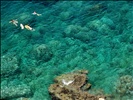
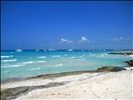
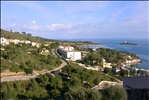
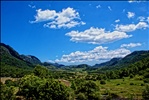
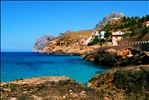
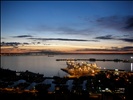

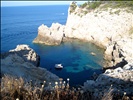

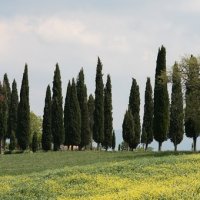


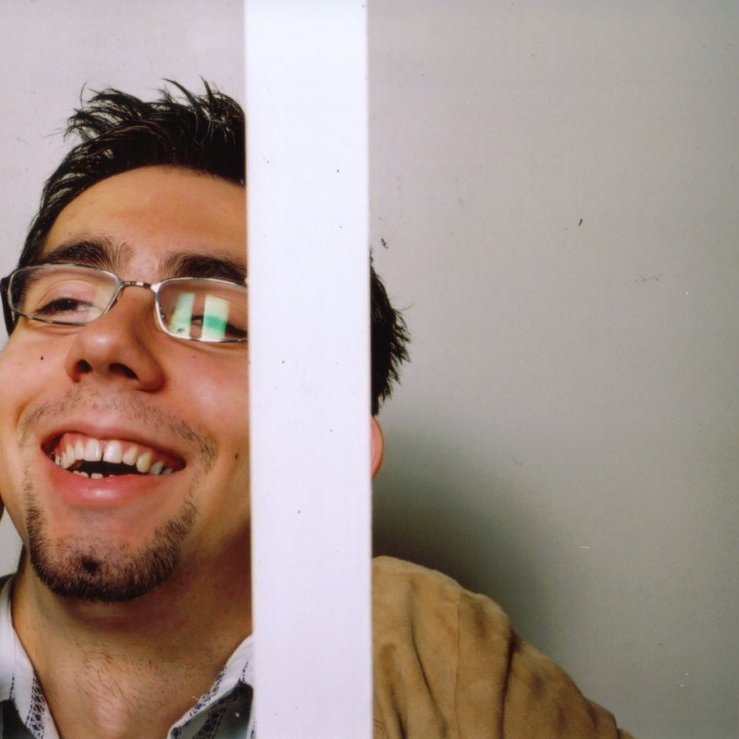



I liked
Mallorca port of call for cruisers one of the favorites for most of the companiesI disliked
Nothing